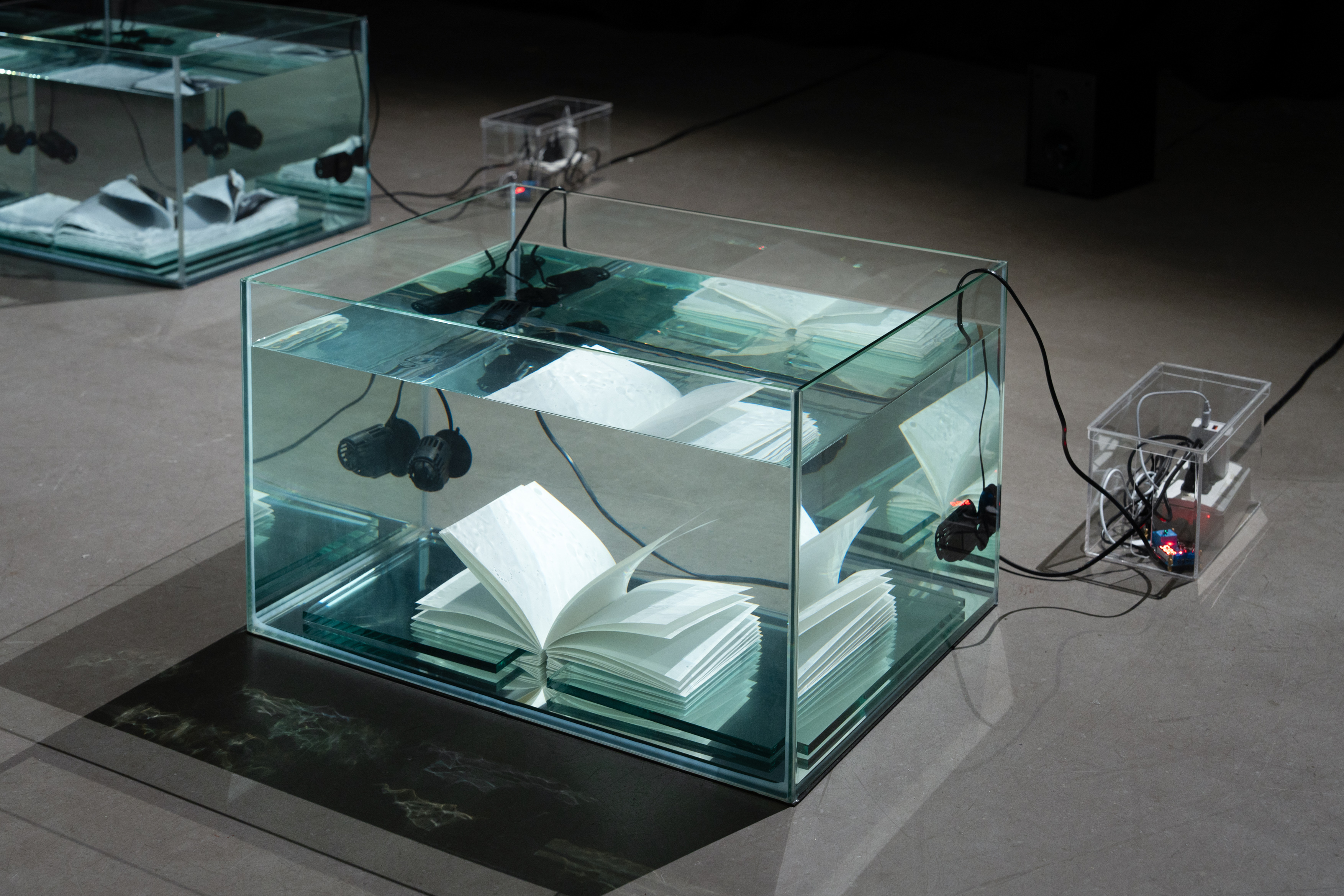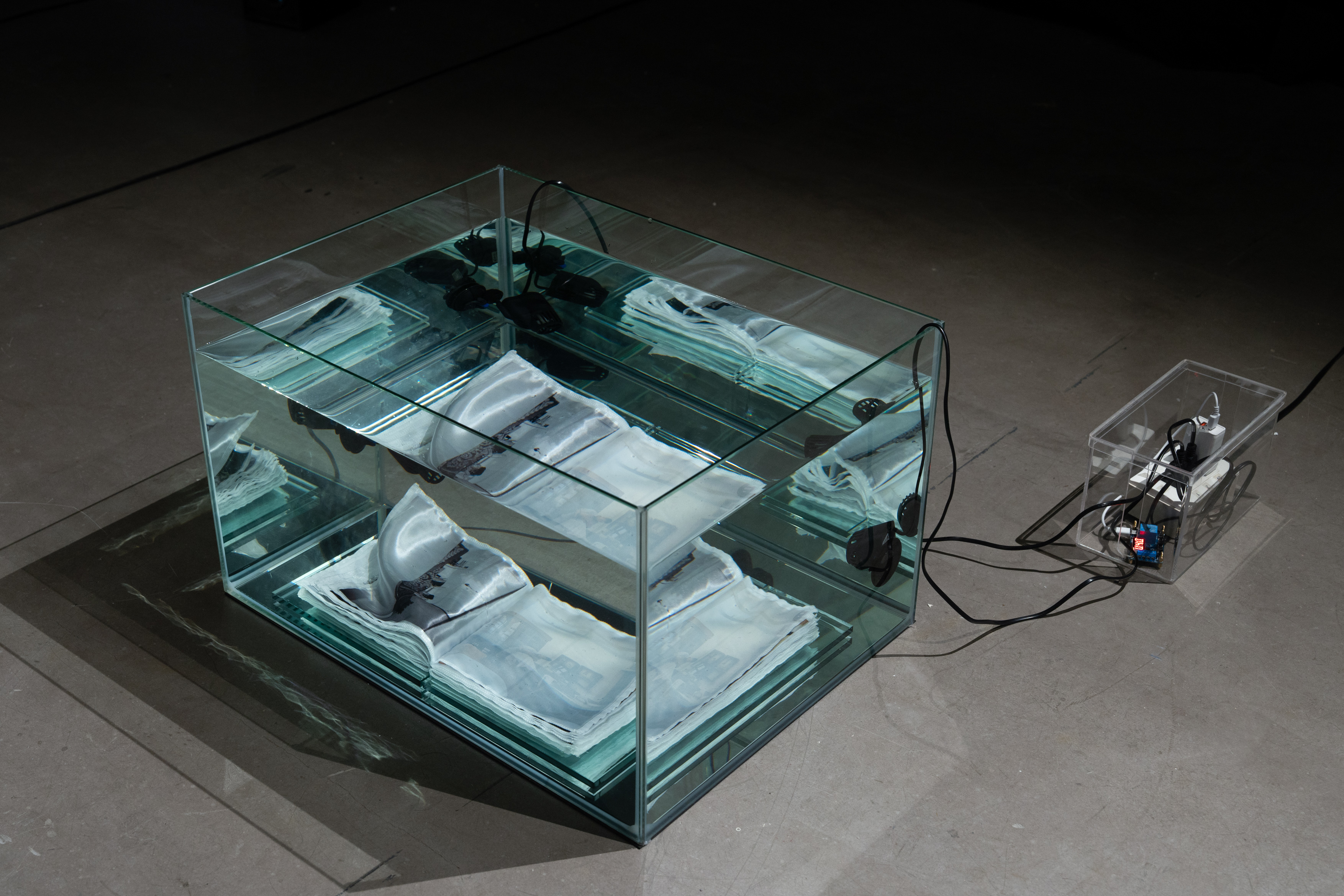



Amphibian palm
L-R:
For fruit
For measuring the wind
For things that can fold
For eternity
Glass tanks, mirrors, glass weights, digital print on satin, machine embroidery on gazar, waterproof paper, plastic seals from kiat-kiat net bags, acrylic boxes, wave makers, relay timers, water, music by Itos Ledesma (‘A watery commons where nobody has to perish’ , two channel audio, 41 minutes)
Tanks: 60 x 45 x 35 cm each
Boxes with timers: 22.8 x 11.5 x 14 cm each
2024
Lesley-Anne Cao’s Amphibian palm is a series of aquarium tanks placed inside of which are “books.” For this project, Cao wants us to think about our ideas around books and the activity of reading. Each “book” inside the aqueous vessels are prompts to reconsider the ontological relations that play out in considering the materiality of a book and reading as an activity. What constitutes a book? Does stitching together sheets of any material create a book? Is it still a book if it doesn’t have anything in it? What constitutes reading? A book undulates inside each tank. With the aid of an electronic wavemaker automated by a timer, each of the book’s pages gracefully flip through the next until all pages have been flipped through and the activity starts again from the opposite end of the book. The automated flipping through displaces the human agency and thus it is the water that is reading the book. Out of this displacement emerges an atmospheric mode where human agency loses its exceptional activity and just becomes one of many that responds to and is acted upon by the prolific agencies of the environment. (Carlos Quijon, Jr.)
Weather-world
Blindspot Gallery, Hong Kong
19 Nov 2024 – 11 Jan 2025
Curated by Jims Lam & Carlos Quijon, Jr.
With support from HART Haus, Hong Kong’s Visiting Artist-in-Residence program
Photos 3, 5, 6 by Ray Leung. Image courtesy of the artist and Blindspot Gallery, Hong Kong.